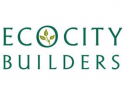|
Origin of the word "ecocity"
by Richard Register

Tong Yen Ho, Chief Executive Office of the Sino-Singapore Tianjin Eco-city Project, asked me about the origin of the word "ecocity." I sent him a short version of the story just yesterday. Then Today Kirstin Miller asked me for an article for our June newsletter. So I'm adding a few words to the letter, delving back in time all the way to 1965...
Tong Yen, by the way, had also said in his e-mail that he had been very busy and at a major conference in Beijing Tianjin Eco-city booth had been visited by Chinese Premier Wen Jiaboa. After congratulating him on his visit by the Head of State of China - Mr. Ho is from Singapore, by the way - I responded to him with the following:
"About the term ecocity, eco-city or EcoCity, I got very interested in the basic concept when I met Paolo Soleri in 1965 with his "arcology" ideas, which are an extreme form of Ecocity - the whole city in a single structure, radically pedestrian and three-dimensional. I was 21 years old at the time. From that I took the basic ideas to be the essence of, not necessarily a literally single structure city, that he was advocating. Soleri is an architect - 92 years old with his 93rd coming up in three weeks - so being an architect it makes sense he would start from there, combining architecture with ecology to come up with "arcology."
"Always fascinated by the obvious but unseen important things right under our noses, when Paolo mentioned the sprawling suburbs like Los Angeles, where I lived at the time, looks "small" with their scattered small houses and little cars buzzing about actually and ironically constituted a gigantic energy hogging and destructive infrastructure, I immediately took notice. The inspiration for the alternative -- the lean and energy and land conceiving city -- struck me immediately as profoundly positive."
"By 1970 I was questioning the term since I thought we were concerned with city design, not just building design. But he was committed to his term by then, having published a couple books using the term by then, notably his 1969 "Arcology - the City in the Image of Man." In addition I liked the common word "city" better than something like "polis." Wang Rusong for one and our colleague the architect from Adelaide, Australia named Paul Downton, who organized the Second International Ecocity Conference in Adelaide, Australia in 1992 with partner Cherie Hoyle, prefer the term "ecopolis." But this seems to me overly academic. Nobody thinks they live in a "polis" but more than half humanity think they live in a city! In any case, I was thinking "ecocity" way back around the beginning of the 1970s. I was also writing about solar energy then for the Los Angeles Times and was a real critic of the urban layout there. Solar is a supply side solution. Ecocities constitute a demand side solution in that they require much less energy - demand far less energy to run than car-based city designs.
“It was sometime in the winter of 1979/1980 that I started using the term “ecocity” consistently and publically as something of a promotion. I had been the founding President of Arcology Circle, started in 1974 and incorporated in 1975, which was exploring Paolo’s ideas and our own which integrated a lot of other strains. By 1979 there was a debate in-house to change the name for several reasons. Important among them was that we were interested in transforming existing cities as well as building new towns, though both approaches were important. We didn’t believe a city had to be literally in a single structure to function as a well integrated, dense, pedestrian living organism. I was advocating Ecocity Builders as the new name for the organization even then. I was out-voted by the board of directors and the name was changed to Urban Ecology.
“But at that point, winter of 1979/1980, being hard to convince, I started using the word consistently, sometimes “eco-city,” but usually like an ordinary word as if already in common usage: “ecocity.” Form about 1982 through 1986 I was working on the book “Ecocity Berkeley” published in 1987, using that city as a potential scenario case study for changing into the future. When in 1991 I had a terrible board of directors working against most of our basic principles and trying to provide exactly what the foundations wanted us to do rather than what was consistent with our theory and practices to that point, I quit and founded Ecocity Builders, Inc. in It was an attempt, largely successful I believe, to stay true to the basic principles and keep the creative leading, if as they say also, bleeding edge.
“So that’s the story! I probably first thought of the name around 1969, year of the first trip to the moon and birth of my son, plus publishing of Paolo’s book, “Arcology.” By the way, I’m in that Time Magazine that has the picture of the guy on the moon with the stiff American flag on the cover.
(Hah! I found the cover on the Internet! I’ll attach it.)
At the time I was making tactile sculpture and the article I was in had to do with that subject, featured as a “behavior” article, not “art.” We’d just opened a tactile art gallery and show at Long Beach State University in California and the magazine was covering that subject too. August Coppola, movie maker Francis Ford Coppola’s brother, organized the tactile art show.”
Then Tong Yen wrote back expressing a great deal of interest, so I added another e-mail note:
“Well, since you seem to be interested….
Actually things were far more complex than that. I was in 1965 also, having dropped out of college in the Junior year, happily making sculpture in a storefront studio in Venice, California, involved in the anti-war movement. Rent was so cheap I only had to work for money one day a week and spend my time in sculpture and…
“I was upset about the US War in Vietnam at the time and was wondering how it is people accept war so readily considering the horror of it all, injustice, rationalized murder and so on. So wondering how much might be related to violent entertainment and war toys – for FUN! when all about injuring, killing and stealing, not generally considered good values – I also started a project called No War Toys in which myself and friends and supporters engaged nursery schools, alternative schools, Parent Teacher Associations, radio and television audiences asking just how healthy is it to promote violent toys? I’d debate parents, teachers, psychiatrists, etc. Very interesting subject: where does war come from in psychology and education, and what role does entertainment and play assume when condoned and encouraged in the private home? Is it in fact earliest training for the acceptance of one’s own country going to war?
“So the pieces came together with ecocities like this: (My father was an architect and I’d helped build two of my family’s houses in my teens which counts for general background…) I decided, being close to broke, I had to raise some money to support the No War Toy campaign and follow it where it might go. I had recently come up with the so-called “smiley face” – took the dot for a nose out of the usual child’s drawing with two dots for eyes and an up-curved line for the mouth – and was selling lapel buttons and bumper stickers and actually making a fair amount of money like that on the side. I thought we needed a logo and was systematically running through my mind what would be both positive and creative. I decided young children’s drawings of smiling faces was it. Needing more money than I was making, though, I decided to hitch hike back to my old high school in Arizona called Verde Valley – a boarding school for rich kids mostly, very international – and see if any of the parents coming to the graduation that year would like to give me some money for my efforts. One did: $300, which, says the Website “Inflation Calculator” right now, is worth about $2,200 in 2012 dollars – a very big deal for me at the time. Looking for a ride back to California, I found a ride with another parent, not the one with the money, who said, “Do you mind if we stop by a famous architect’s house on the way back?” It was her car – of course I didn’t! That architect turned out to be Paolo Soleri and I was immediately intrigued with his idea of three-dimensional, car-free cities as something pretty profound. Another interesting coincidence: that check I got for $300 was from an office in the most three-dimensional building on the planet at the time, or at least the most vertical, the Empire State Building where my donor had her office.
“Kind of complex, no?!
“I don’t know if you really want that much detail but I think you might be entertained some! I certainly found my life at that time to be pretty entertaining, and a little dangerous when I decided to oppose the war very publically, going on television and organizing demonstrations when I was skirting the edge of draft dodging having exaggerated some things to get out of the draft. Fortunately, I went through the induction interviews before the Bay of Tonkin Incident, after which things got really tight – a lot of guys didn’t come back after those interviews, or did with disastrous physical and psychological wounds – to say nothing of what happened to the Vietnamese. Horrible and yet very creative times. Certainly shaped my thinking. Kirstin Miller wants my next book to be my autobiography but would make me feel awfully self-conscious.”
Richard Register is founder and president of Ecocity Builders and can be reached at: ecocity [ at ] igc [ dot ] org.
|




































Comments
Great article Richard - "Ecocity" continues unattributed, to inspire..
One small typo and comment: Wen Jiaboa is correctly "Jiabao" and the powerful geologist who visited the booth was also born in Tianjin where the Ecocity is being developed. China has its problems for sure, but at least the top leadership appears to "come down to Earth" occasionally and maintain a scientific outlook. (unlike some places I can think of...)
Peace Plus One_\!/
Philip
World Sustainability Project
www.SustainabilitySymbol.com